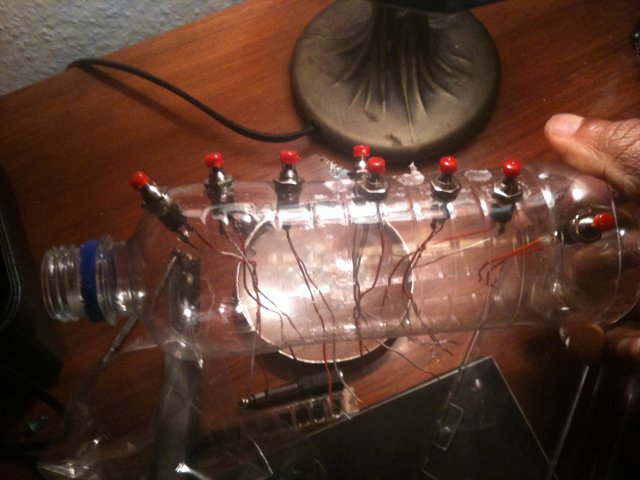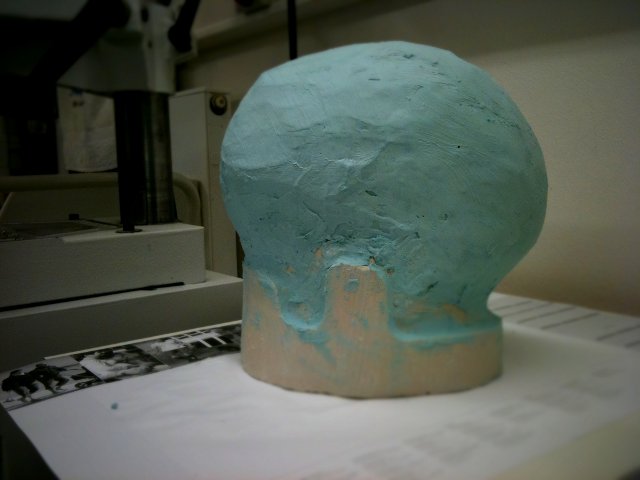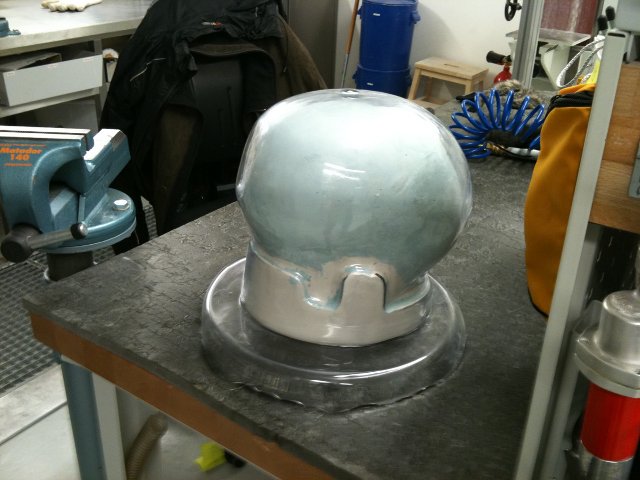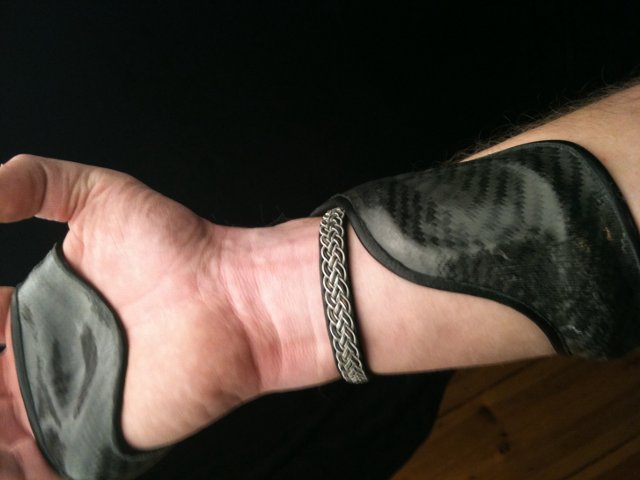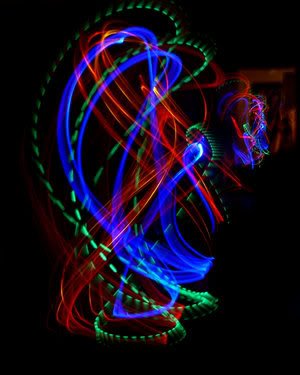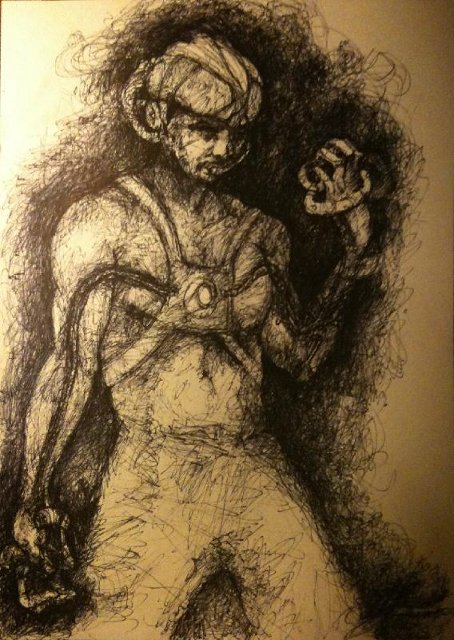
Onyx Ashanti is insane – in the special, essential way that makes certain brilliant musicians. An experienced busker, having crossed from the US to Berlin, he’s a rare virtuoso of wind instruments and electronic improvisation, the kind of musically-free soul who can just let loose live. But his latest project really crosses into some new territory.
He’s making himself into Tron.
No, really – just having some handheld touch control wasn’t enough, so he’s preparing an open source, wearable rig. He’s hardly the first to attempt this sort of thing, but he has two major advantages: first, he’s already developed the musical idioms and chops he needs, rather than leaving that for some indeterminate time after the thing is built. Second, he has on his team not only himself, but people with experience in prosthetics, plus the co-founder of Ableton. And the work isn’t just a crowdsourced pipe dream: it’s already well on its way.
I could try to describe it all, but this is a project only its mad-scientist, mad-musician creator can really do justice. So I’ll let Onyx take it away.
My Name is Onyx Ashanti. I am a Busker, Author, Beatjazz Artist.
Beatjazz is a term and style of music i came up with back in the late 90s, which described my playing of my wind MIDI controller with beats I had pre-programmed into Fruity Loops [now FL Studio]. That was cool for a while, but as time went on and I got older, It became boring. I wasn’t writing new beats as often as i should have. I had an Ableton phase which gave me a different means of using beats as a sort of hybrid, chopped-up DJ/live set kinda thing, but i got bored of that, as well. It wasn’t until a family tragedy that I realized that it was time to walk that tight-rope, in a sense, to do the weird and the crazy stuff that you convince yourself not to, for the various reasons you give yourself. So beatjazz evolved into a beat-centric form of live music based on live looping, software synth-based sound design, and jazz improvisation. That was three and a half years ago.
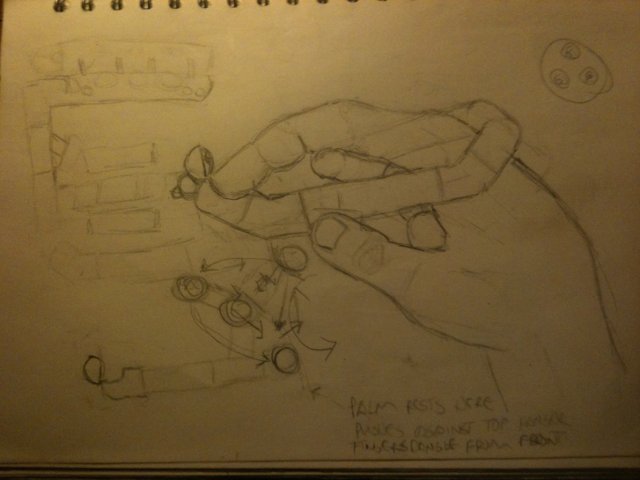
It wasn’t easy. It took a year just to get proficient enough to play beats live without a metronome using the wind controller. But after that, Beatjazz evolved in ways i couldn’t have imagined — styles of music that I may have heard once in my life, springing out of one of these extended improvised sessions, which sounds oddly like DJ sets in their continuity.
Over time, I have outstripped the capabilities of my [Yamaha] WX5 wind MIDI controller. It was not designed to do multi-elemental improvisation. There are many things to do and keep track of during a live beatjazz performance, so I have, over the last few years used a wide variety of different secondary controllers, such as the M-Audio Trigger Finger and the Korg microKONTROL, but found them all to be to distracting in performance. A wind midi controller is constructed like a horn. It looks like a clarinet, and as such, it’s hard to play and simultaneously tweak a knob on a secondary controller, because your hands need to be on the horn. And I never liked foot pedals, especially in clubs, because they limit my movements to a very small area — and get drinks spilled on them CONSTANTLY.
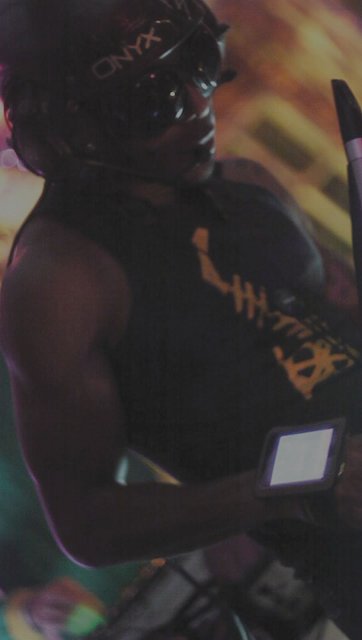
Last winter, I started experimenting with using TouchOSC, interfacing with [open source multimedia development environment] Pure Data on my computer, as a gestural controller. In that way, I could simply wave or shake my hand and control many parameters at once, which opened up many new stylistic trajectories that are still very exciting — so much so that I can’t do what I consider to be “my music” without an iPhone running TouchOSC strapped to the back of my hand. This is great and very cool, but isn’t optimal because there are so many gestures I have created and only one accelerometer/GUI, so I set out to design a system that was designed specifically for the presentation of beatjazz. The result is the TRON Beatjazz controller system.
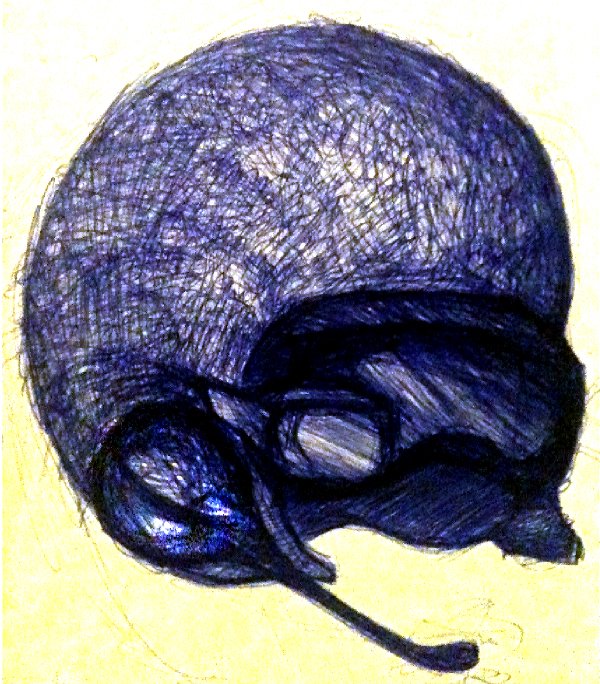
I called it TRON because the system is made up of three main components; a helmet (above) and 2 hand units (top). Each unit is wirelessly connected to the computer. The hand units together are “fingered” the same way one would finger a saxophone or a clarinet, known as the “Boehm” fingering method [see video / below], but the hands do not have to be in a stationary “horn” position the way they are with those instruments. Each hand will have switches for keys, a joystick, an accelerometer, and a color synthesis system based on RGB LEDs to tell the audience what element i am playing (for instance, blue for bass and green for drums,etc). Part of the performance of these units is hand motions very similar to that of a raver using glowsticks (image below), which results in light trails reminiscent of the light effects from the movie TRON.
The purpose of this system is to provide a complete live performance system that incorporates lights, sound, and dance in one cohesive new form. The helmet, which looks like an afro, is made of carbon fiber and will house lip and breath sensors, a wireless microphone system, in-ear monitoring with ambient mics (so I can hear things around me without taking the helmet off), a digital compass for directional processing, an accelerometer, and two very powerful PC fans so I don’t have a heat stroke while wearing it. Why have a carbon fiber helmet? Primarily because a friend who is a professional creator of artificial limbs offered to help me make use of the material, and also because it’s durable and very lightweight. Oh, and I almost forgot — BECAUSE ITS f&%(ING CARBON FIBER! It’s the coolest-looking material on Earth! Ahem.
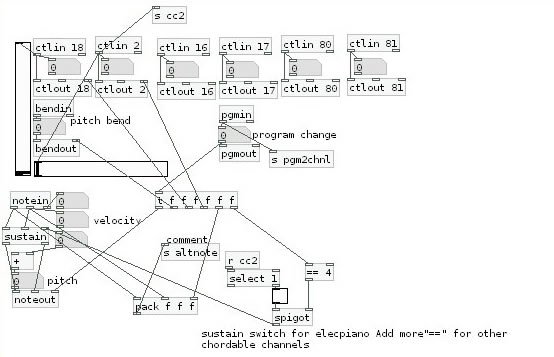
The brains of the system will reside on the host computer by way of Pure Data [above]. This is for two main reasons. First, as I stated above, I get bored easily. This system will be permanently malleable. Since the controller is just a wireless array of sensors, I can change and adapt them to do many thing I can’t imagine at this time, which leads to the other reason:
This is an open source project. This system would not be possible without open source software and hardware in the form of Pure Data and the many Arduinos that will make up the core components of this system. I am releasing all notes associated with this project once it is completed, as well as detailed notes on the concept and methodology of Beatjazz. By keeping the brains on the computer, by design, the concept should evolve exponentially in multiple directions. People can use these notes and patches as a jump off point for their projects, and it is also a not-so-subtle way of spreading the gospel of open source, of which I am a zealot.
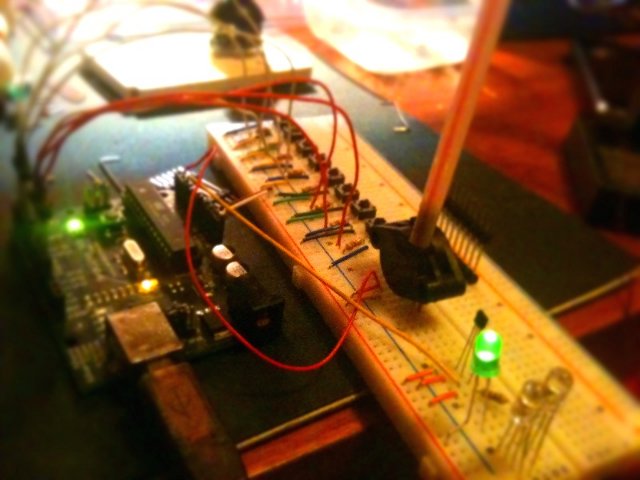
Beatjazz is part of an atomization of sound culture. It is pure, computer-enabled improvisation. I never know what I am going to play onstage, even while I am playing. I combine the vibe in the room with what I am feeling at the moment, limited only by my skills and my sound set, and construct/deconstruct a narrative that provides a singular soundtrack for that moment. It may come out as house or be-bop or latin jazz — that’s the point, I have no idea, and it is very exciting.
I am doing this project now because, for lack of a better way of putting it, it’s just time! I’ve “practiced” for 20 years. This is the stuff i grew up dreaming about. When you reach a point in your life where you have the skills and the determination and the “people resources” to make something actually happen, you have to act! I have direct access to some of the most amazing people with the skills that make this a much more viable project.
Uli Maier is the Prosthetist (video above) that is helping me cast the molds we will use for the helmet and hand units. Chris “Loganic” Logan draws the ideas out in a form that conveys exactly what i see in my head, Tomas Henriques is wind synthesis legend, having already created the Meta-EWI [customization of the Akai wind controller] and the award-winning Double-Slide controller and Native Instruments co-founder Stephan Schmitt is offering to help me design the custom looping system that will form the backbone of the system. (The controller is open source, not the synths and looping system — yet.) I’d be mad not to go for it with all of these stars aligned at one time! These are just a few of the people that make the project real.
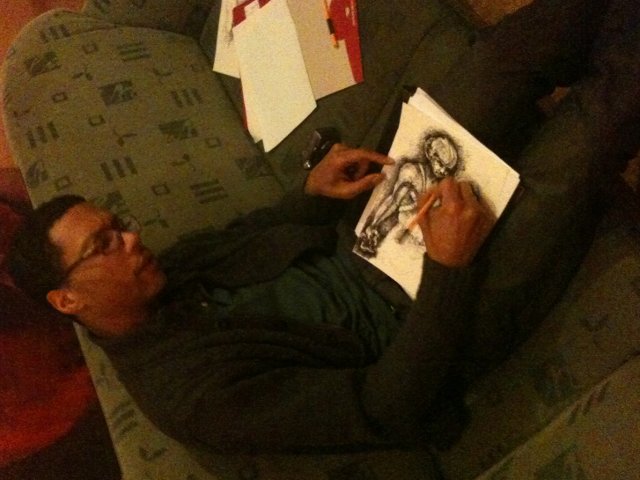
This is the most exciting thing I’ve ever been part o, as an artist, but its also, by far, the most expensive, so i am “crowdfunding” it through indiegogo.com, which is another amazing aspect of the modern Internet — the ability to bring people directly into this project that may be really interested in it. I have a created a wide array of “perks”, i.e. cool items in exchange for contributions to this campaign. From an exclusive EP of the twisted beatjazz that I will create with the new system ($5-available in late May), at onyxashanti.bandcamp.com, to a hand-bound copy of my book entitled “The 21st Century Musicians Guide to Busking” ($50, completion by late March). Options go all the way up to various versions of the controller system itself, in wired and wireless varieties, including the $5000 “Ultimate Package” in which you get the same carbon fiber controller i am making for myself (with a different helmet). I will it deliver to you personally, spend two days teaching you how it all works, and then you and I will give a concert for your friends and family! See: www.indiegogo.com/tronbeatjazz.
I have been told that saying that I want to create “the most amazing live music performance system ever” is a bit “bombastic”. But I wouldn’t say it if it weren’t the intended goal and if it didn’t think it were possible.
www.beatjazz.blogspot.com
www.indiegogo.com/tronbeatjazz
